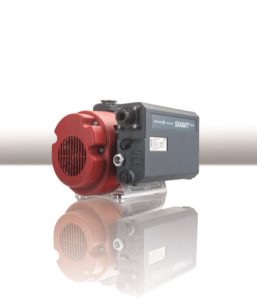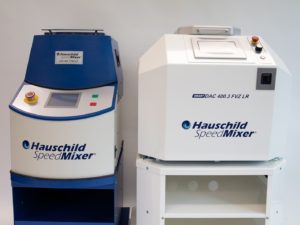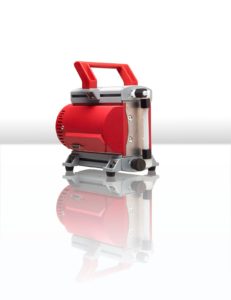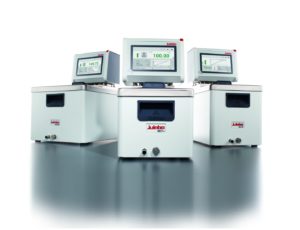Maag Gear Pumps for Laboratory Applications
For technical requirements in particular, plastics are being used more and more and undergoing constant development in order to satisfy ever-growing demands.
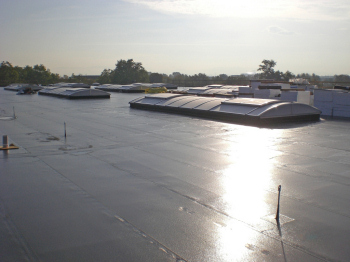
EPDM films for flat roofs: clean, flawless and tight (Image: Maag)
In the construction sector, because EPDM sealing films especially need to deliver excellent protection against leakage over the lifetime of a building, new mixtures represent a constant challenge to suppliers. In order to developed EPDM films further, Maag is unveiling a gear pump as a laboratory solution. This will enable the end product – film – to be optimised to a laboratory scale and “tuned” for new large-series applications.
Although penthouses with sloping walls have their charms, the Mediterranean flat-roofed construction has become more and more commonplace in Central Europe too since the 1970s. Although flat roofs were quite striking to begin with, since they couldn t cope with the weather conditions prevalent in the region, they have been improved massively since then and, thanks to a plastic, are now given an almost "endless life". This plastic is EPDM (Ethylene Propylene Diene Monomer), a terpolymer elastomer such like rubber that belongs to the family of co-polymers (as defined by DIN 7864). EPDM is manufactured from the byproducts of oil refinery ethylene and propylene.
Sealing webs made from EPDM
Sealing webs have been extruded from EPDM for the construction sector since 1960. These sealing webs are primarily used to seal flat roofs, back-ventilated facades and ponds. The advantages of EPDM are clear. Sealing webs made from EPDM can stretch by up to 500% and are permanently elastic, even in extreme temperature fluctuations between -40°C to +120°C. A lifespan of decades makes these films the ideal sealing solution.
Applications of EPDM
In light of the undisputable advantages in terms of durability (see table 1) offered by the saturated polymer framework, the realm of possible practical applications is extremely diverse. The Deutsche Industrienorm organisation talks about the M Group – the opposite of which is the R Group, to which monomers with unsaturated hydrocarbon chains such as natural rubber (NR) or styrene-butadiene rubber (SBR) belong – with limited possibilities.
Classic applications for EPDM films include:
- Roof and construction seals
- Seals, such as O-rings, sliding ring seals and flat seals
- Hoses for hot water and steam applications
- Absorbent mats for improved thermal insulation
- Pond liners.
Chemical principles and mixtures
Conventional EPDM rubbers have an ethylene content of between 45 and 75 weight per cent. Polymers with a low ethylene content (45 - 55 weight per cent) are amorphous and have the best flexibility in cold conditions. As the ethylene content increases, so does the crystallinity. Pure, linear polyethylene, therefore, is highly crystalline. An EPDM with a moderate ethylene content (55 - 65 weight per cent) is partially crystalline. Terpolymers with an ethylene weight per cent of over 65 have larger crystalline areas and therefore behave like thermoplastic elastomers. These have a strong resistance to tearing, even in their un-cross-linked state. The diene content of commercial products is between 2 and 12 weight per cent, corresponding to a proportion of 3 and 16 double bonds per 1,000 C atoms. A higher diene content causes faster cross-linking, greater solidity and less residual deformation. The resistance to ageing, weathering and ozone, on the other hand, dwindles as the diene content rises. Therefore, depending on the requirements in hand, the right mixture needs to be produced in order to deliver the properties needed, such as higher rigidity or resistance.
EPDM expertise from Maag
Maag Pump Systems has been familiar with the use of EPDM for many years. Maag’s largest gear pumps in the Polymer-polyrex series are used in the manufacturing of these rubber-like applications. In order to develop EPDM films further, solutions for batch operation, small plants and laboratory solutions are available as innovation drivers in order to facilitate the testing of new methods and procedures on a small scale. This experience can later be transferred in a targeted manner to mass production. Industrial pumps made from stainless steel with a special, wide inlet geometry are particularly ideal for these types of laboratory solution.
For removal from the reactor, we use the heated version of the therminox-V pump size 28/28 (TX-V 28/28) which has recently been developed by Maag. This gear pump features a special inlet geometry. The design facilitates the removal of highly viscous fluids, such as pre-polymers (up to 4 million mPa/s) under vacuum. The pump is directly flange-mounted on the suction side flange on the reactor in order to keep the NPSH as small as possible. The pump housing is the only thing that reveals that the pump is suitable for the toughest, corrosive applications. When developing this test system for EPDM manufacturing, not only did process temperatures of 150°C need to be taken into account for this special design, but so too did a viscosity of up to 1.7 million mPa/s at an NPSH of 5.5 mbar, an inlet pressure of 5.2 bar and an outlet pressure of 10.2 bar. For this reason, Maag used shafts made from 1.4112 stainless steel and bronze-aluminium bearings for this customer-specific application. The shafts and bearings can withstand the process parameters of pressure and temperature. Excellent emergency running properties were also needed. The design and components ensure an exceptionally durable gear pump. A gland packing is used as the seal, which offers first-class characteristics in terms of simple maintenance. In order for the process to be run with the exclusion of an atmosphere, and in order to prevent reaction of the EPDM medium with air, the seal was made up of a locking, spring-loaded and adjustable packing. Another advantage of the use of an adjustable seal is the prevention of "bearing pick-up" at high pressure, caused by inadequate lubrication. This pump series has been developed especially for highly viscous media and prepolymers with a low inlet pressure for use in laboratories and small plants. The example of EPDM is just one of many and shows the varied practical applications of the V series from Maag.
Source: Maag Pump Systems AG


